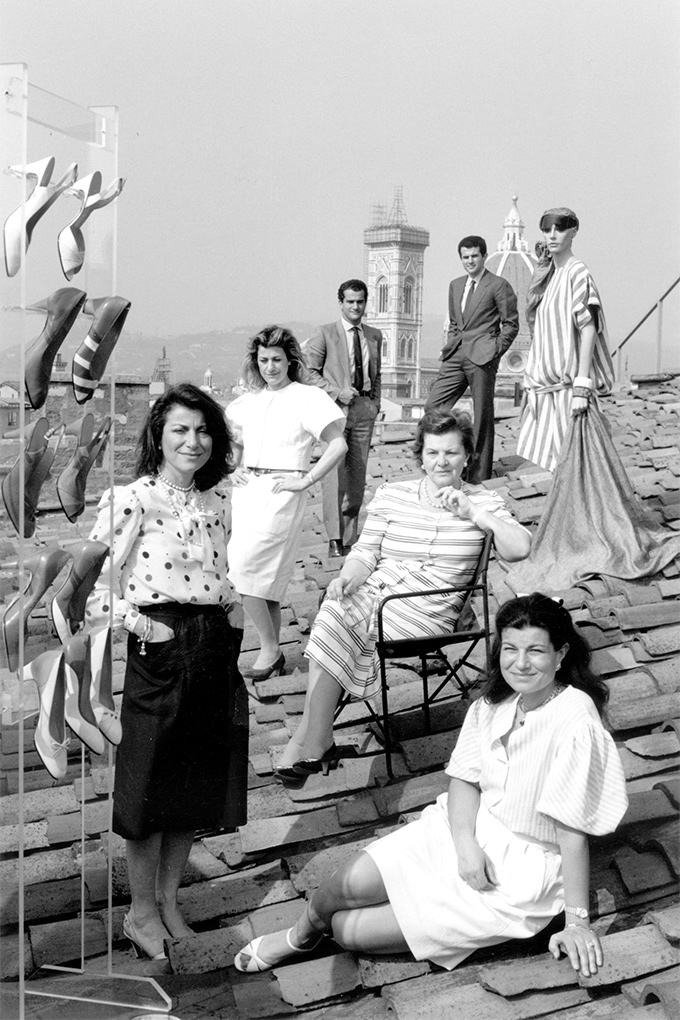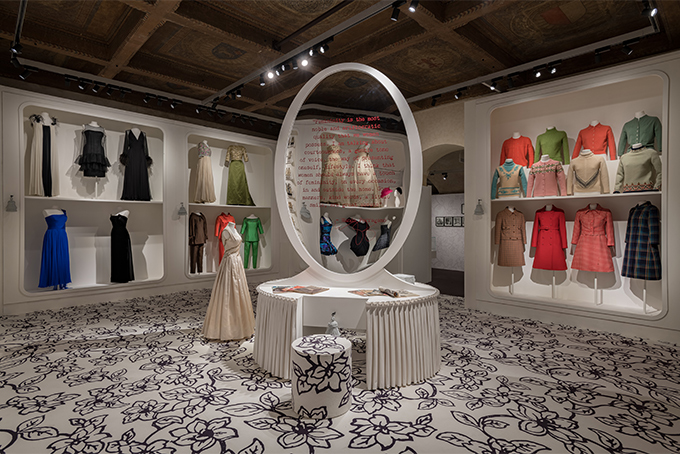Born in a small town in Bonito, Italy in 1921, Wanda Miletti-Ferragamo was 18 when she met her husband, Salvatore Ferragamo. She would later succeed him as the head designer of his namesake label after his death in 1960. At 39 years old, with six children and no prior experience with running a business, she forged her way through the fashion industry as a woman—a rare occurrence in the ‘60s—and cemented Salvatore Ferragamo’s legacy as one of the most storied fashion houses in the world.
Miletti-Ferragamo was equally involved at home, too. Remembered by her loved ones as elegant, kind and reserved, she struck a meticulous balance between work and family. It was her belief that women “could easily run a company if [they’re] able to judiciously run a household”. Using her knowledge and status as a heavyweight in fashion, she subsequently founded Museo Salvatore Ferragamo and Fondazione Ferragamo, which aim to educate younger generations on the importance of moral values when running a business.
Her masterful ability to steer the house of Ferragamo to success while caring for her family tirelessly inspired the Women in Balance exhibit, happening now till May 2023 at Museo Salvatore Ferragamo in Florence, Italy. Acting as more than just a commemoration of Ferragamo’s history, the curators of the Women in Balance exhibition also hope to inspire the rebirth of attitudes towards relationships between the genders after the hardships the pandemic has caused. Expect various contributions by artists at the event, alongside the publication of Miletti-Ferragamo’s biography, created with the help of an interview and a manuscript written by her granddaughter, Ginevra Visconti.
Stefania Ricci, one of the curators of the Women in Balance exhibit, and Ginevra Visconti speak to Vogue Singapore about the exhibition.

Tell us about your most memorable experience with your grandmother, Wanda Miletti-Ferragamo. What is the most valuable lesson she has taught you?
Visconti: One of the most memorable experiences with my grandmother is quite recent. It was just a few weeks before she passed away, three years ago.
It was a beautiful sunny day at the end of September and I visited her at her beautiful house in Fiesole, Florence, just a few kilometres outside the city. We sat for a long talk, just the two of us. She asked me about the kids, about my work, about my husband, and also about my horses, which she did not actually enjoy as she was always worried about me getting injured. She did not say a word about herself as usual. She never spoke much about herself, but instead asked about everybody with genuine care and interest. Whenever I answered negatively, she would say: “Get over it, and never speak about it anymore. Erase it, just throw it behind your shoulders and keep going.”
In our last conversation, she taught me a big lesson: If you want things to work out, you have to be positive by forgiving and even cancelling all the negativity.
What was it like for a woman to head a leading luxury brand in a time where it was not common?
Visconti: She did not have much choice when my grandfather, Salvatore, died. She was 39 years old and she had six kids. The only alternative was selling the company, but she was strongly against it. She had only been a mother before she started working, but she was always saying that the education she received at home when she was a little girl has been very important in managing a company. “You have to care,” she used to say, and she did. She also had to find a very good balance between being feminine and making people respect her. She ended being a role model for it!
What were her biggest struggles in leading Ferragamo forward in the ‘60s?
Visconti: She found herself managing a company without having any experience in business. She had to learn everything from scratch, from finance, to production and marketing. In those days, heading such an important company and a worldwide brand was a real challenge.
She was always concerned that she would not be able to preserve the beauty of Ferragamo. She knew that the artist was Salvatore Ferragamo, but with a lot of discipline, courage and good intuition, she ended up being as much of a genius as he was.
Which trait or characteristic of Miletti-Ferragamo made her ventures so internationally successful?
Visconti: She was determined and disciplined but at the same time emphatic and smart. She had a lot of common sense and was very intuitive. She always suggested that we listen to our intuition as the most important guide to make decisions. But what really made her a successful person was her ability to communicate well, despite being a very low profile person. She was an incredible writer, and she had the ability to imbue her words with important values.

How did she strike a balance between work and home, seeing that she treasured both equally?
Visconti: She treated the company as she did the family, taking care of both with the same amount of care. She was very strict but at the same time she was able to establish relationships with everyone. Everyone adored her, though she could be demanding and severe at times.
What is something you have realised about your relationship with your grandmother while writing the biography that you did not previously?
Visconti: I always took her words as a Bible, especially when I was growing up. I realised how much she loved her family and the company. I was concerned about some old-fashioned values she had, but eventually I was convinced that they always work and they are a guarantee to achieve a healthy company and a peaceful family.
What was your inspiration for the Women in Balance exhibition?
Ricci: Wanda’s existence stayed in the shadows in many ways. The credit was always given to others: to her husband, her children, and the people who worked with her. For many years, Wanda was encouraged by her family, her friends, and her employees to write an autobiography, but no such project was ever completed. With this in mind, we, as curators, came up with the idea of an exhibition that would not only tell of how she decided to radically change her life, but that would also look at the complex world of women in the ‘60s. This was a world on the move—a complicated, multi-faceted, and contradictory progress that led to many women establishing new roles for themselves and to greater freedom for all of them, contributing significantly to the construction of Republican Italy.

How has Ferragamo changed as it moved into the new millennium?
Ricci: Today, the company has a range of products for both men and women suited to different types of international customers, especially in the eastern market, that until the ‘90s, represented a minority among Ferragamo’s customers. To meet the needs of the new generations, modern products such as sneakers have been introduced, what were once called “walking shoes”. Another very important aspect of our company is female representation. This has always distinguished us from other brands. Women play a fundamental role in the Salvatore Ferragamo Group, making up 70% of the employees and 65% of the top organisational levels.
What makes this exhibition so pivotal and important now?
Ricci: The exhibition offers a clear cross-section of Italy in a period of great creativity. Though the time period examined in the exhibition is limited, it nevertheless deals with a contemporary theme: The relationship between private and public. This is a topic that is much discussed, especially after the pandemic that hit our country which highlighted a very complex dynamic when it comes to women balancing between work and family and private and public.
“The narrative of the exhibition is based on the fact that women, when entering the public scene, have also found nuanced solutions as they constantly search for balance between work and family.”
Tell us more about the experiences we can expect to have at the Women in Balance.
Ricci: I hope that the Women in Balance exhibition can be a fun way to learn about an important period of our history and also to understand it at its deepest. I believe that young people, especially, become curious and seek analogies to understand their world through women in history.





